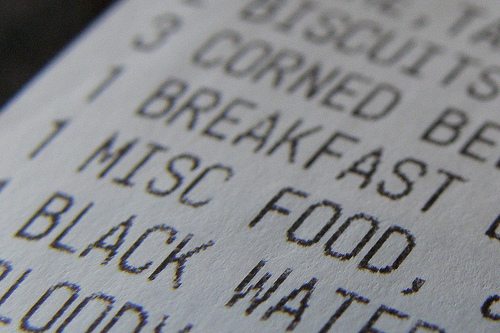
How to Start a Family Budget
By Amanda of The Naked Ledger
1. Start by tracking your spending.
The only way to figure out what you SHOULD be spending is to figure out what you ARE spending and sadly the only way to do that is to keep track. Begin by saving every. Single. Receipt for every purchase you make. Personally, I keep my receipts under the checkbook holder of my wallet, but you can make it even easier by labeling a shoebox and leaving it on the counter in your kitchen. The key is that you have to save literally every receipt.
2. Make a 30-day commitment.
It’s easiest to begin tracking your spending at the beginning of the month (it’s not too late for March!), but any day will do. You just have to be willing to save those receipts for an entire monthly spending cycle. Most bills come up on a monthly basis, so 30 days is generally the shortest snap shot from which you can make intelligent extrapolations about your annual spending.
3. Mind your cash carefully.
I’m one of those consumers who puts EVERYTHING on plastic and then pays off the bill once a month, rarely keeping so much as a dollar of actual cash money in my wallet (just ask my 5-year-old, who too often comes up short in the weekly scrounge through the bottom of my purse for his allowance). But not everyone is like me and if you’re the type of spender who likes good old-fashioned paper money, then you’ll have to keep track of that too. Sorry! Any time you spend cash without getting a receipt, you’ll need to write it down. I find it’s easier if you just keep the original ATM receipt and use the backside to itemize the cash as it disappears from your wallet.
4. Add it up.
A lot of people swear by Quicken or Mint.com or a variety of iPhone applications that can help you keep track of your spending with the helpful zip of technology and in a lot of cases, those tools are exactly that… helpful. But it’s even easier to yank a sheet of paper from your printer and sit down with your receipts, a pencil and a calculator.
Start by going through your receipts and lumping similar items together. At first, it’s almost impossible to be too specific with your spending categories, but some basic ones include: groceries, dining out, entertainment, clothing, household, kids, gas/transportation, etc. (My budget always includes a category for BOOZE.) You’ll also need to itemize your monthly bills and group them accordingly so you can get a big picture of your overall spending (utilities, education, childcare, housing, etc). On another sheet of paper, do the same categorization of your income (Paychecks, dividends, gifts, etc). Cross your fingers that the total at the bottom of the income page is somewhere within the ballpark of your spending page!
5. See what your spending says about your family.
Most of the time, the simple act of KNOWING where all your money went for a month is enough to enlighten you as to specifically where improvements need to be made. (I spent HOW MUCH at Costco?!) A lot of people will get to this point and go, “No wonder we have so much credit card debt!” because they really honestly had NO IDEA how big the gap was between income and spending. Maybe you’ll add everything up and give yourself a pat on the back for being so frugal! To get a general idea (VERY VERY GENERAL) of what average spending categories look like, you can put your after-tax income into a calculator like this one from Dave Ramsay’s website.
With the knowledge (or horror!) of how much you’ve BEEN spending rolling around in your brain, you should be much better equipped to set some goals and proactively stick to a budget.
Photo by Dan4th

